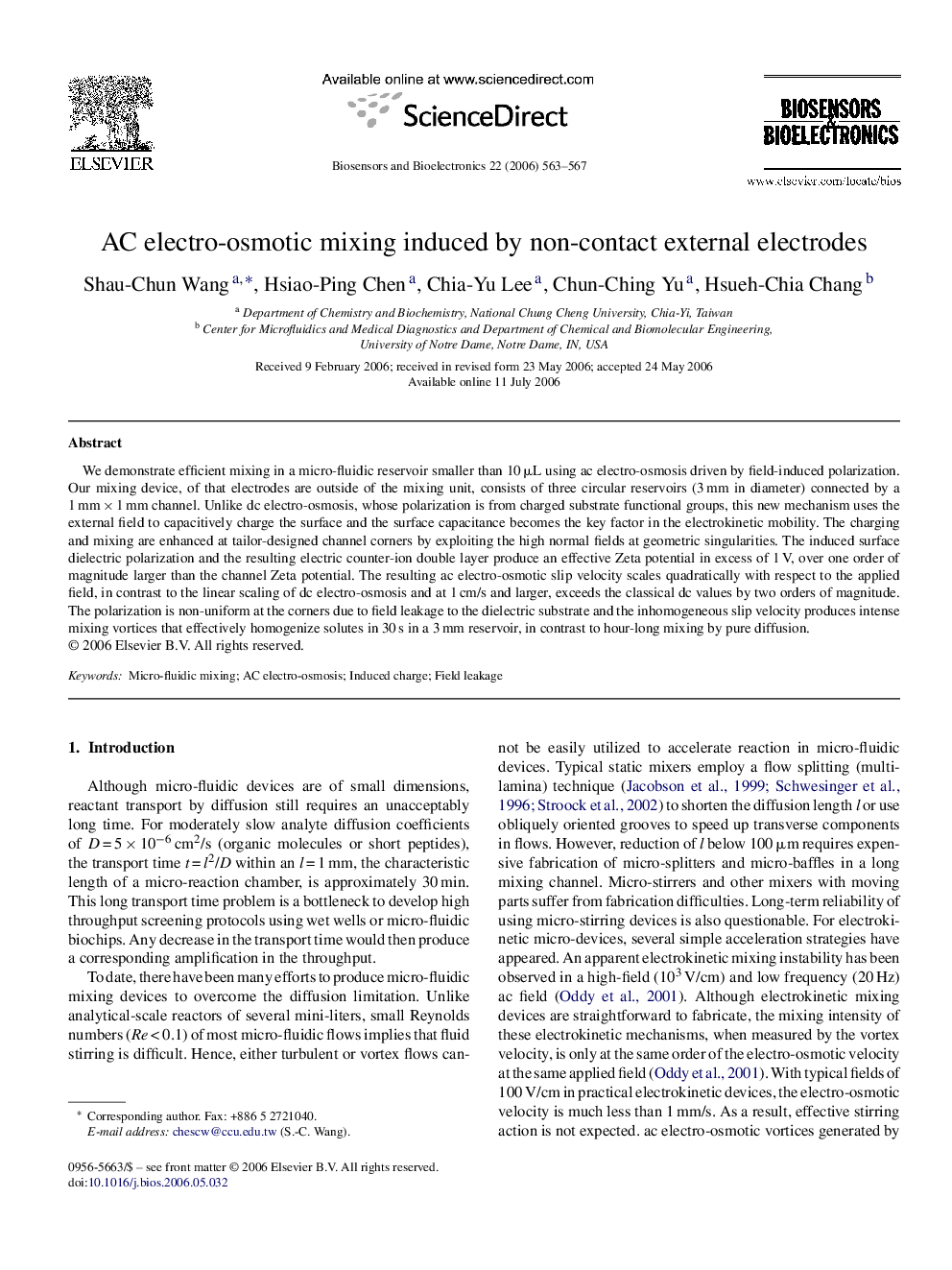| Article ID | Journal | Published Year | Pages | File Type |
|---|---|---|---|---|
| 869845 | Biosensors and Bioelectronics | 2006 | 5 Pages |
We demonstrate efficient mixing in a micro-fluidic reservoir smaller than 10 μL using ac electro-osmosis driven by field-induced polarization. Our mixing device, of that electrodes are outside of the mixing unit, consists of three circular reservoirs (3 mm in diameter) connected by a 1 mm × 1 mm channel. Unlike dc electro-osmosis, whose polarization is from charged substrate functional groups, this new mechanism uses the external field to capacitively charge the surface and the surface capacitance becomes the key factor in the electrokinetic mobility. The charging and mixing are enhanced at tailor-designed channel corners by exploiting the high normal fields at geometric singularities. The induced surface dielectric polarization and the resulting electric counter-ion double layer produce an effective Zeta potential in excess of 1 V, over one order of magnitude larger than the channel Zeta potential. The resulting ac electro-osmotic slip velocity scales quadratically with respect to the applied field, in contrast to the linear scaling of dc electro-osmosis and at 1 cm/s and larger, exceeds the classical dc values by two orders of magnitude. The polarization is non-uniform at the corners due to field leakage to the dielectric substrate and the inhomogeneous slip velocity produces intense mixing vortices that effectively homogenize solutes in 30 s in a 3 mm reservoir, in contrast to hour-long mixing by pure diffusion.
